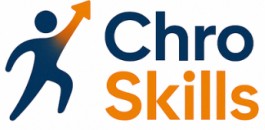
Understanding the Strategic Role of a CHRO
Defining the Strategic Role in Enhancing Organizational Performance
Successfully navigating the increasingly complex landscape of human resources requires exceptional strategic insight. A Chief Human Resources Officer (CHRO) is expected to serve as a strategic partner in business operations, playing a pivotal role in shaping the company’s future. As the leader of the HR department, a CHRO must balance the dual focus of employee satisfaction and organizational performance. Their expertise in understanding the role of a CHRO in business becomes essential in achieving this balance.
With a comprehensive understanding of management practices, a CHRO is instrumental in setting clear goals that align the workforce's efforts with the company’s mission. The role demands a keen ability to analyze data and implement innovative strategies that enhance employee experience and drive performance management initiatives. These strategies often include compensation benefits designed to attract and retain top talent.
Building a productive work environment also involves creating a robust strategy for employee retention. This is where consulting services to gain insights into the latest industry trends can be invaluable. A CHRO’s strategic approach should encompass employee engagement programs and initiatives that comply with privacy policy standards and legal regulations.
By understanding the strategic significance of their role, CHROs are able to effectively guide businesses towards sustained success. They ensure that the HR department is not merely a back-end function but a key contributor to the overall business strategy, fostering an environment where both employees and organizations thrive.
Leadership and People Management Skills
Exceptional Leadership Attributes
In the dynamic realm of human resources, the ability to lead and inspire is paramount. A Chief Human Resources Officer (CHRO) must possess a toolkit of leadership and people management skills to align business strategy with workforce execution. At the top of the list is the capacity to cultivate clear goals which propel the organization forward, ensuring alignment between employee performance and the overarching business objectives.
Mastery in Performance Management
An astute CHRO must delve beyond mere supervision to create a robust performance management framework. This involves designing systems that not only evaluate employee output but enhance their work environment and deliver meaningful employee experience. Tailored to the unique needs of each individual and team, effective tools emphasize transparent communication and constructive feedback, driving both retention and performance.
Commitment to Talent Development
Talent management services, such as developing and refining compensation benefits packages, are a critical responsibility. A CHRO strives to attract and retain top talent by understanding the varied motivations within the workforce. By offering comprehensive benefits and engaging opportunities, the incentive to excel is significantly heightened, ultimately boosting employee engagement and retention rates.
Insights from Industry Experts
The evolution of HR demands that CHROs consult widely, leveraging data-driven insights for informed decision-making. Recognition from consultancy firms highlights the role of experience in navigating complex challenges effectively. Fostering an environment where continuous learning is encouraged ensures the workforce remains adaptable and agile.
Celebrating HR professionals day, we acknowledge the honed skills that CHROs persistently refine to excel in their field. For further insights, consider delving into honing the skills of a Chief Human Resources Officer for a deeper understanding.
Navigating Change Management
Embracing Change for Organizational Success
Navigating change management is essential within the strategic role of a Chief Human Resources Officer (CHRO), especially when it involves management and workforce transformation. In today's fast-paced business landscape, organizations often face shifts in their operations or structures. A well-executed change strategy ensures a seamless transition that aligns with business objectives while maintaining employee engagement. Effective change management involves several key aspects:- Communication: Clear, consistent, and transparent communication is crucial. Employees should understand why changes are occurring and how they will benefit the organization and individual employee experience.
- Employee Involvement: Actively involving employees in the change process enhances retention performance. Soliciting feedback can provide valuable insights and allow employees to voice concerns, thereby improving engagement.
- Training and Development: Providing training services ensures that employees have the necessary skills to adapt to new roles or technologies. This enhances business performance and supports talent retention efforts.
- Leadership Commitment: Leaders must demonstrate commitment to change initiatives by setting clear goals and being visible champions for change within the work environment.
- Performance Management: Aligning compensation benefits and performance management systems with new organizational goals reinforces the desired behaviors and outcomes.
- Data-Driven Decisions: Utilizing data and analytics to tailor change strategies can personalize the approach for different groups within the business, fostering a supportive and responsive environment.
Fostering a Culture of Diversity and Inclusion
Creating an Inclusive Work Environment
In today's diverse business landscape, fostering a culture of diversity and inclusion is not just a moral imperative but a strategic advantage. A Chief Human Resources Officer (CHRO) plays a pivotal role in designing and implementing strategies that promote an inclusive work environment. This involves understanding the unique needs of a diverse workforce and ensuring that all employees feel valued and respected.
To achieve this, CHROs must develop clear goals and strategies that align with the organization's overall business objectives. This includes implementing policies that support diversity, equity, and inclusion (DEI) initiatives, and ensuring compliance with relevant regulations. By doing so, businesses can enhance employee engagement and retention, ultimately boosting performance and productivity.
Implementing Effective Talent Management Strategies
Effective talent management is crucial for fostering diversity and inclusion. CHROs must focus on attracting, developing, and retaining a diverse pool of talent. This involves creating a comprehensive talent management strategy that includes recruitment, performance management, and compensation benefits tailored to meet the needs of a diverse workforce.
Moreover, CHROs should leverage data and analytics to identify gaps in diversity and inclusion efforts and measure the impact of their initiatives. By using data-driven insights, they can make informed decisions that enhance the employee experience and drive business success.
Providing Training and Development Opportunities
Training and development are essential components of an inclusive work environment. CHROs should ensure that employees at all levels have access to training programs designed to enhance their skills and promote understanding of diversity and inclusion. These programs can help employees recognize unconscious biases and develop the skills needed to work effectively in a diverse team.
By investing in employee development, businesses can create a culture of continuous learning and improvement, which is vital for long-term success. This approach not only benefits employees but also contributes to the overall performance and competitiveness of the organization.
Consulting and Collaboration
CHROs must also act as consultants to other leaders within the organization, offering guidance on best practices for diversity and inclusion. By collaborating with other departments, they can ensure that DEI initiatives are integrated into all aspects of the business, from recruitment and onboarding to performance management and employee engagement.
In conclusion, fostering a culture of diversity and inclusion requires a comprehensive strategy that involves all levels of the organization. By prioritizing these efforts, CHROs can create a work environment where all employees feel valued and empowered to contribute to the organization's success.
Leveraging Technology in HR
Integrating Advanced Technology into HR Practices
In today’s digital era, the influence of technology on human resources cannot be overstated. The role of the Chief Human Resources Officer (CHRO) in leveraging technology is critical for improving the employee experience and optimizing HR services. Understanding key technological tools and platforms designed to streamline HR functions can significantly enhance workforce management and business performance. One of the primary ways technology impacts HR is through performance management systems. These platforms provide a structured approach to setting clear goals, tracking employee performance, and offering valuable insights into talent management. Additionally, they support the development of personalized employee engagement strategies, increasing retention rates and overall business success.Efficient Data Management and Compliance
Technology enables effective data management, allowing CHROs to maintain a comprehensive view of employee performance, compensation benefits, and retention indicator metrics. By utilizing data analytics, HR leaders can predict trends, identify potential challenges, and align strategies with business objectives. Moreover, with the increasing need for privacy policy adherence, CHROs must ensure all technological solutions comply with legal standards. Protecting employee data not only fulfills compliance requirements but also builds trust within the workforce, thereby enhancing the work environment and contributing to a positive company culture. Leveraging technology also facilitates seamless communication and negotiation across the organization. It ensures that employees have access to information, fostering transparency and promoting a unified vision of the company’s strategic goals. Thus, using the right technological tools can effectively support a CHRO's mission to drive the organization towards prosperity and robust employee relations. In essence, the integration of technology into HR practices is not just an option but a necessity for transforming employee management processes, ensuring compliance, and achieving business excellence. By focusing on tech-driven strategies, CHROs can refine their approach and create a proactive HR framework that meets the dynamic demands of modern businesses.Building Strong Communication and Negotiation Skills
Enhancing Communication and Negotiation in the Workplace
Effective communication and negotiation skills are pivotal for a Chief Human Resources Officer looking to drive organizational success. These skills play a critical role in conveying clear goals, fostering employee engagement, and aligning human resource strategies with business objectives.- Strategic Communication: A CHRO must possess the ability to communicate the organization’s HR strategy effectively to both employees and leadership, ensuring everyone is aligned with the overarching business goals. This involves translating complex management concepts into easy-to-understand language and promoting transparency.
- Active Listening: It’s not just about speaking well. Listening actively to the workforce enables a CHRO to understand the needs and concerns of employees. This understanding is crucial in designing employee-centric policies, which can lead to improved retention performance and enhanced employee experience.
- Negotiation Acumen: Whether it's working on talent management strategies or negotiating compensation benefits, a CHRO must be adept at reaching agreements that satisfy both the organization’s requirements and the workforce's expectations. This skill can directly impact employee retention rates.
- Collaborative Environment: Encouraging an inclusive work environment where diverse voices are heard and valued promotes a culture of innovation and trust. By leveraging strong negotiation skills, a CHRO can help mediate disputes and navigate confounding workplace challenges.
- Data-Driven Solutions: Implementing data analytics to understand workforce trends and performance management needs can enhance decision-making processes. By interpreting this data, a CHRO can provide management with actionable insights that help optimize employee engagement and improve overall business performance.













